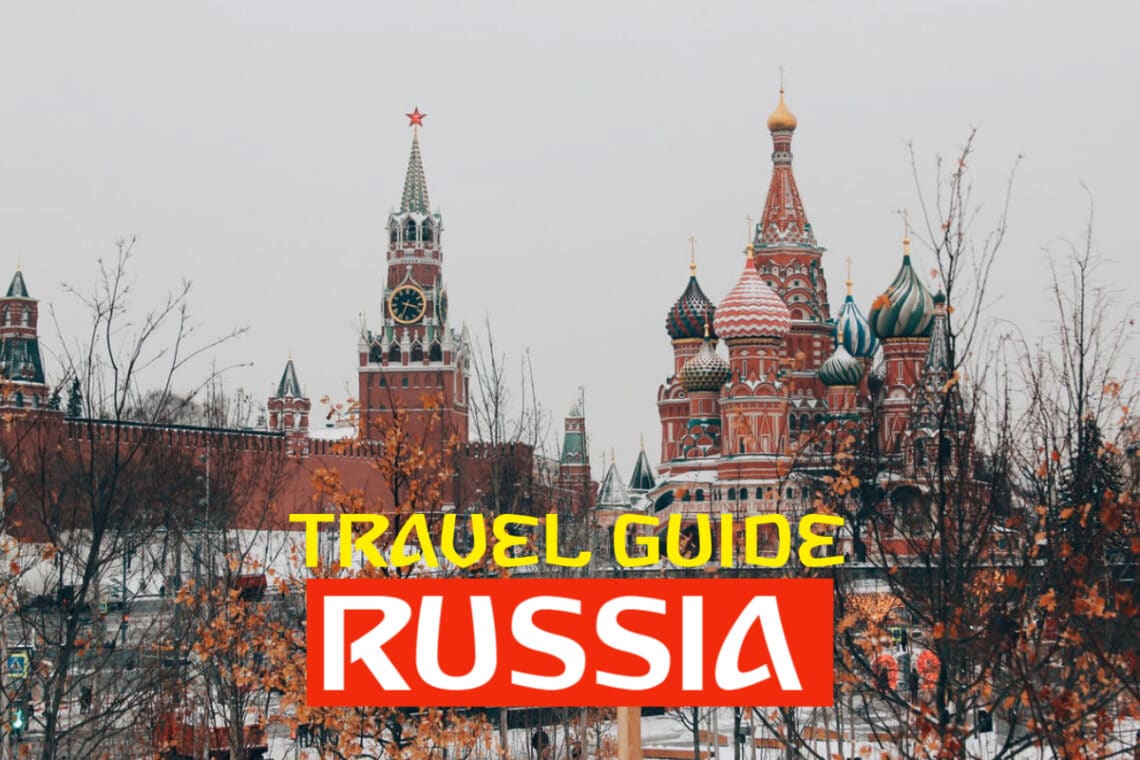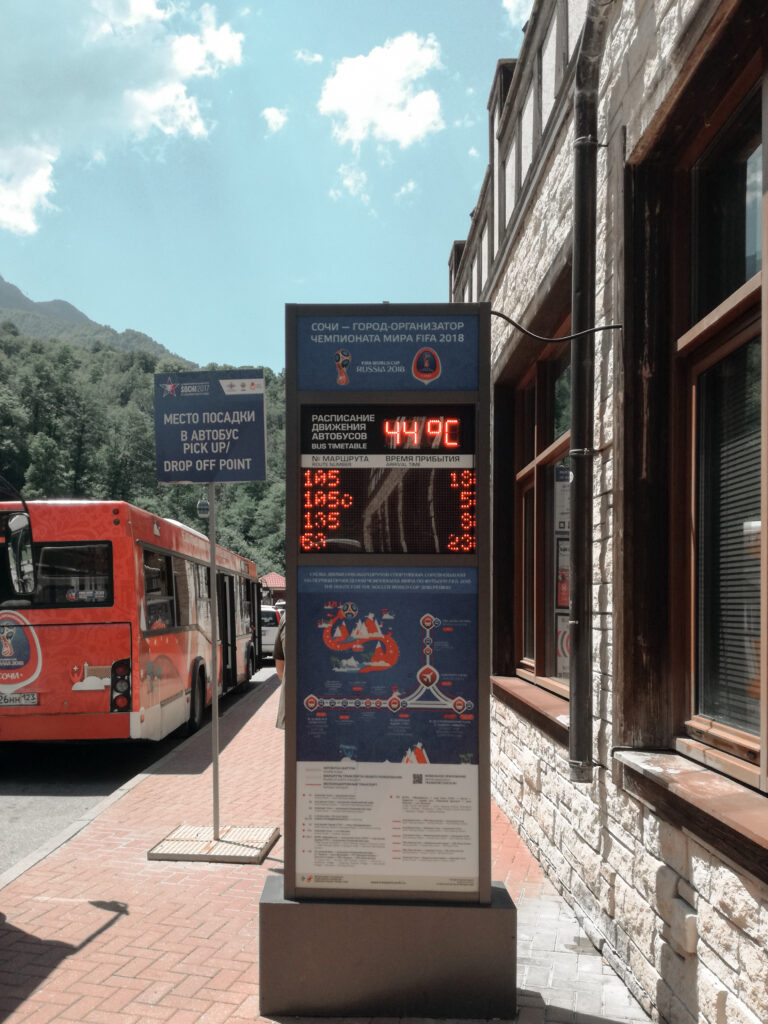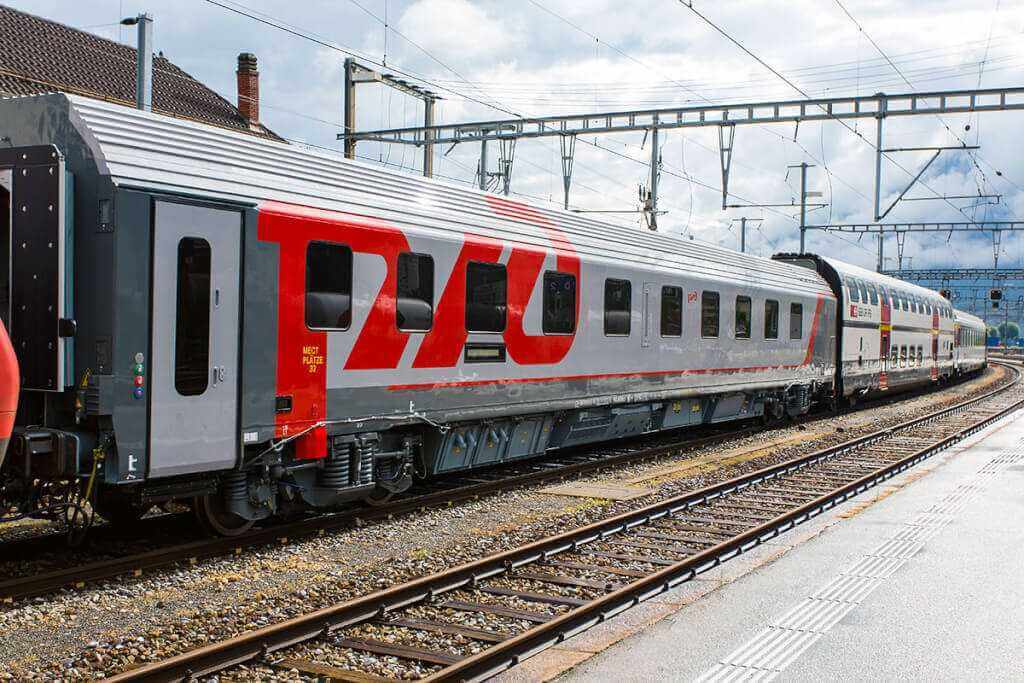
RUSSIA TRAVEL GUIDE
Russia is a fascinating wonder to outsiders. Sir Winston Churchill, attempting to uncover Russia’s mystery in 1939, coined this masterly description: “a riddle wrapped in a mystery inside an enigma.” So, Let’s start with my Russian travel guide.
At the end of the 1980s, Russian borders finally opened to the world, curious tourists have poured into Russia. Many traveled beyond the cities of St. Petersburg and Moscow to find out what this uncanny nation offers.
Everything about this country is astonishing—from its eventful history to its size. Russia is conquering 17.1 million km² (that’s 6,602,347 square miles!) of the earth. No wonder it’s recognized as the largest country.
Russia’s most populous city, Moscow is also its capital, boasting the finest of Russian architecture. Under a Federal Republic government, the famous President Vladimir Putin has been heading the state since 2012. Prime Minister Mikhail Mishustin has been serving their government since 2020.
RUSSIA PROFILE
- Capital: Moscow
- Area: 17.1 million km²
- Population: 145 Million (2018)
- Official languages: Russian
- Ethnic groups: 185 Ethnic groups: Russian 77%, others include Tatar, Ukrainian, Bashkir, Chuvash, Chechen.
- Currency: Russian Rouble (RUB) ?Rate
- Time zone: 11 Time zones (Moscow: GMT+3)
- Driving side: Right
- Phone number code: +7
- Main Airports: Here are the top Russian airports. Moscow: Sheremetyevo (SVO), Domodedovo (DME), Vnukovo (VKO). Saint Petersburg: Pulkovo (LED). Ekaterinburg: Koltsovo (SVX). Novosibirsk: Tolmachevo (OVB). Krasnoyarsk: Yemelyanovo (KJA). Khabarovsk: Novy (KHV). Krasnodar: Pashkovsky (KRR). Ufa: Ufa (UFA). Sochi: Sochi (AER).
- Power plug: types, C and type F. Two round pins, with two earth clips on the side. 220V supply voltage and 50Hz
Monumental in every aspect, it is a land where citizens walk the streets boasting regal finery. Russia is where its geography features the icy Siberian tundra, where aged Soviet-era memorials surround metropolitan cultures. Obviously, the Russian spirit grace all activities, from the ruling party down to the ordinary people’s practices.
This Russia Travel Guide will give you a glimpse of what the “Land of Rus” has to offer.
TABLE OF CONTET:

visa policy in russia
As usual, I would like to start a Russian travel guide with the visa policy. In the past Russian visa was one of the most complicated permissions in the world. A Visa was required by almost all the world to enter Russia and the former soviet union.
Nowadays, the policies have changed and Russia opens wide arms welcoming visitors from all over the world. During FIFA world cup 2018, entry to Russia was as easy as buy a game ticket and apply for “FAN ID” online.
 Russian visa exemption
Russian visa exemption
By Albatalab at English Wikipedia, CC BY-SA 3.0, Link
The citizens of 54 countries are now eligible to apply for the Russian visa online. You can apply for an online tourist visa from here.
Countries eligible for online e-visa are:
Austria, Andorra, Bahrain, Belgium, Bulgaria, Cyprus, China, Croatia, Czech Republic, Denmark, Estonia, France, Finland, Germany, Greece, Hungary, India, Indonesia, Iran, Ireland, Iceland, Italy, Kuwait, Japan, Latvia, Lithuania, Liechtenstein, Luxembourg, Malaysia, Malta, Mexico, Monaco, Netherlands, North Macedonia, Norway, Oman, Poland, Portugal, Philippines, Qatar, Romania, San Marino, Saudi Arabia, Serbia, Singapore, Slovakia, Slovenia, South Korea, Spain, Sweden, Switzerland, Taiwan, Turkey, Vatican City.
Other countries should apply for a visa to visit Russia through the nearest Russian embassy. Find here all the requirements and details.

climate in Russia
In my Russian travel guide, I will not discuss the whole climate of Russia because I may need to write a book. If you like more details, you can read more on geography books. But I will focus mainly on the general climate and the climate in Moscow and Saint Petersburg.
winter in Russia
The essential thing to note about the Russian weather is that it varies from region to region. Most of Russia lies in a moderate climate zone where it is quite cozy to spend your holidays. However, it is crucial to watch out for the Russian climate’s extreme winter.
Actually, the severe cold is due to many factors, including the country’s high latitudes (40-75°N). Other factors include enormous landmass, and lack of any topographic barriers to protect it from icy winds far-reaching across its often frozen coastline. Also, Towering mountains along its southern and eastern flanks border the country. But the west is bare to occasional winter raids of milder Atlantic air.

All of these factors causes winters to become increasingly brutal eastwards. In effect, there are only two distinct seasons—winter and summer. On the other hand, Spring and autumn are brief periods of change in between.

summer in Russia
The summertime is the best time to visit Russia, as it snows in the winter. Because of the snow, it may be challenging to enjoy the activities in Russia. However, skiing and play on snow are always fun.
Regarding Moscow, the summer is not so hot. Although it can get more cold and wet in somedays, it is still tolerable. Also notice that the sun can be cruel somedays. So my advice to you is not to forget your umbrella on any single day in Moscow.

In Saint Petersburg, the summer is cold and wet. Russians call it summer because the sunrise and there is no snow—the temperature drops at night down to 5 C.

In the rest of the Russian cities, the summer is almost the same as in Moscow. It is not so hot, and the temperature range from 13 to 20 C. Also, it can get so hot especially in the south.

Precipitation in Russia
Russia experiences modest to low total amounts of precipitation and the declared summer maximum. Transverse the European plains and western Siberia, the total rainfall regresses from northwest to southeast, where quantities differ with elevation. Snow is a distinct factor in the whole country, while its depth and duration have significant consequences for agriculture.


LEARN MORE:
MEDICINES TO BRING WHEN TRAVELING ANYWHERE
FOOD IN RUSSIA
If it’s Russian cuisine we’re talking about, vodka + caviar + cabbage would surely be the main equation on everyone’s minds. However, the country offers loads of appetizing traditional dishes to satisfy your equally adventurous taste buds. Their cuisine is especially favorable for vegetarians!
The most classic Russian recipes are made of vegetables and wheat, such as soups, porridges, and stuffed dough. It may be strange to foreign eyes, but you will surely be anticipating the diversity and flavors of Russian cuisine. Even tourists cannot hide their astonishment upon meeting these masterpieces mixing the flavors of Europe, Asia, and the Middle East. If you ever find yourself in Moscow, make sure to experience the following 10 dishes featured in this Russia travel guide. They can lighten up even the coldest winter nights.
1. Borscht
This traditional recipe is said to be the favorite soup of the emperors Catherine the Great and Alexander II. The writer Gogol equally loved it, and even ballerina Anna Pavlova was fond of this high-calorie soup served with goose.
Known as one of the most well-known traditional Russian/Ukrainian dishes internationally, borscht is a sour red beetroot soup. It is prepared from meat or bone stock, sautéed vegetables, and beet soup. You may find yourself overwhelmed by an assortment of borscht recipes, but know that these only differ in their ingredients list—some are excluded or replaced.
Frequently served with some dill and sour cream, borscht can be eaten either hot or cold. No wonder it is a comfort food for both freezing Russian winters and hot summers.
2. Shchi
This dish is a popular Russian soup made with sour cabbage, meat, mushrooms, flour, and seasonings. Depending on the region, shchi may be called in varying names. If it’s made with meat, it is called bogatye (rich), while pustye (empty) or bednye (poor) is the variant without meat. Shchi is traditionally served with a few slices of rye bread on the side.
3. Beef Stroganoff
Tasting wholesome and hearty, beef Stroganoff is a Russian dish of small pieces of beef filet. These are usually strips sautéed in sour cream together with onions and mushrooms. You may eat it as is or poured over rice or noodles.
Although Russian in origin, the dish resembles the French cooking style seeing how the beef is cut in either cubes or strips. It is still uncertain where the dish was first made, but it is believed to be connected to a French chef—or a French-trained one—working for the Stroganoff family. However, the first known recipe appeared in Elena Molokhovets’s “A Gift to Young Housewives” published in 1871.
4. Solyanka
Apart from being a known Muscovite nightclub, solyanka is also an appetizing spicy and sour soup. Its unique lineup of ingredients—pickled cucumbers, olives, sausage, lemon and cabbage—must be behind its divine taste.
5. Blini
Blini (singular: blin) are a lot like French crêpes, only slightly thicker but lighter. The use of yeasted dough makes this possible. They can be filled with meat, covered in cheese or dusted with powdered sugar. But the traditional condiments smoked salmon, caviar, Smetana and dill are the most well-known companions.
6. Salad Olivier
This dish steadily holds its position in the world’s salad hall of fame. Olivier is a variation of potato salad discovered in the 1860s by Lucien Olivier, a Belgian chef at Moscow‘s most outstanding restaurant at the time, the Hermitage.
The original recipe is unknown. However, the salad was made with caviar, grouse, smoked duck, veal tongue and had its own secret sauce. At present, the mayo-infused Olivier includes much simpler ingredients: boiled potatoes, carrots, eggs, peas, pickles, and boiled chicken or beef. This salad is the ultimate go-to food for Russians and a definite necessity on holidays like New Year’s Eve.
7. Zakuski
The grandiose part of a Russian meal is the first course, zakuski, a course of appetizers that are usually served to seated guests around the table.
This arrangement typically includes salads, prepared meats, fresh and dressed vegetables, and puff pastries (pirozhki) filled a variety of ingredients. Zakuski is the most important course in Russian culture. Most hosts will even consume much more time organizing and arranging zakuski than preparing the main course.
8. Pelmeni
Pelmeni is like a Russian variant of the Chinese dumpling. These are made from thin, unleavened dough and filled with minced meat, onions, mushrooms, and sometimes, turnip. You will find the thinness of this dough makes it unique. You can enjoy it with any kind of ingredient, and we won’t be surprised if it becomes your favourite. Pelmeni can be served with or without broth, but sour cream is a must.
1.9. Okroshka Soup
Okroshka is a cold soup perfect for a hot summer day. It is traditionally cooked with kvass—a refreshing drink made from fermented bread. The soup usually contains boiled meat or bologna, some vegetables and eggs, served with dill and sour cream.
10. Vinegret
This is a traditional Russian salad made of boiled beets, potatoes, carrots, pickles, onions and sauerkraut. It is easy to cook and remains very popular especially during the winter. It is dressed with vinaigrette, mayonnaise or simply with sunflower or other vegetable oil. Occasionally, green peas or beans are added, making its vibrant presentation more appetizing.
CULTURE IN RUSSIA
Russia’s unique culture stemmed from an intricate interaction of native Slavic material, and borrowings from a wide variety of foreign systems. This diverse mix of heritage makes Russia a winning candidate for your next trip abroad.
In the Kievan period (c. 10th–13th century), the borrowings were primarily from Eastern Orthodox Byzantine culture. Asiatic influences passed by the Mongol hordes improved and adapted the Slavic and Byzantine cultural substrates in the Muscovite period (c. 14th–17th century). Ultimately, the modern period (since the 18th century) features the cultural heritage of western Europe.
Russia is home to more than 100 different ethnic groups keeping their roots alive.
According to reports, around 77.7 percent of Russians are of Russian descent. The rest of the population consists of 3.7 percent Tatar, 1.4 percent Ukrainian, 1.1 percent Bashkir, 1 percent Chuvash, and 1 percent Chechen. About 10.2 percent of its citizens come from other ancestries, while the remaining 3.9 percent are unspecified.
Russia’s capital, Moscow, is home to nearly 12 million people. The city boasts many significant symbols of Russian culture, including the Kremlin, Red Square, St. Basil’s Cathedral, and the Tretyakov Gallery. To the north, St. Petersburg earlier functioned as the capital of the Russian Empire from 1713-1918. However, it is now known informally as a “second capital”. St. Petersburg is home to more than 200 museums, 2,000 libraries, and roughly 4,000 historical monuments, making it a UNESCO World Heritage site.
Though Russian is the official language, many also use English as a second language. The country boasts more than 100 other minority languages spoken by its peoples. The Russian language uses the Cyrillic alphabet which has a total of 33 letters derived from an old Slavic alphabet.
The tradition-driven Russian culture places great value on the motherland and on family. Standard Western holidays are celebrated in Russia. Yet, other holidays take on special emphasis, like Victory Day (May 9) and International Women’s Day (March 8). The country’s holidays also recognize unique Russian achievements and events. For example, the nation celebrates Russia’s achievements in space exploration on the 12th of April known as Cosmonaut Day. Russians welcome spring with Maslenitsa, Russia’s version of Mardi Gras.
Religion has recommenced its significance in the civilization. More than half of the population follow the Russian Orthodox Church, with Islam as the second largest religion. Tengrism, a form of pagan, animistic and shamanic religion, closely follows as the third most popular.
The sectors of art, music and literature are reviving their pre- and immediate post-Revolutionary vitality.
Ballet is a notable art form which originated from Russia, making it home to some of the most outstanding performers in the world. Bolshoi Ballet, founded in 1776 based in Moscow, and the Mariinsky Ballet in Saint Petersburg are just some of the country’s—and the world’s—most famous ballet companies.
Russian nesting dolls are likewise popular symbols of the country. These sets of dolls, known as Matryoshka dolls, consist of wooden figures that can be pulled apart to reveal a smaller version of the same image. This opens to reveal yet another doll, and so on. This art form often consists of six or more dolls nested inside one another.
SAFETY IN RUSSIA
This Russia Travel Guide will help you cope well with staying in the world’s largest country in comfort and security. Take note of these pointers and you’re good to go!
Despite some conflicts in the West, travelling to Russia is as safe as visiting any other European country. Although minor crimes such as pickpocketing are still awfully frequent (which is not unlike any other tourist spot), you should not worry about any records of vicious crimes in broad daylight.
However, do note that racial discrimination can be a serious issue in Russia. Russian neo-Nazi and skinhead groups are violent and have been linked to many murders. Although the number of unpleasant occasions has immensely decreased, confrontations on Africans and Asians on city streets are not infrequent.
Be wary of officials or pseudos asking to see your documents or tickets—there’s a chance they will try to find something wrong with your papers and hold them to ransom. Keep in mind that remaining calm, polite, and standing your ground would greatly help you in whatever situation. Try to ask the help of passers-by for translation, or at least as witness during this hiccup in your travels.
Be careful when crossing the road in large cities! Some crazy drivers completely ignore traffic lights. Also, make sure not to take unlicensed taxis for your safety. Avoid taking pictures of police, soldiers, or buildings used for military or security purposes.
Of course, as with traveling in other foreign countries, learning some of their language helps. A lot. One basic Russian phrase that might come in handy is спасибо, pronounced as spaseeba, which means thank you. Only 11% of Russians speak English. This is fewer in comparison to other European countries. But even if you speak little to no Russian at all, do not fret! Museums, hotels, restaurants and bars in tourist areas are good spots to meet staff that speak English.
Russian people are hospitable despite what the media might say. They often go out of their way to help you and give you advice if they can. Do not sweat it when you encounter locals not wearing smiles on their faces. Smiling is less of a norm in Russia unlike many countries, so this doesn’t mean that you are unwelcome. Just remember to be polite and patient with the language barrier, and everything else will follow.
In a nutshell, it is doubtful that tourists will encounter unsafe situations in Russia. Using your common sense in dealing with situations would greatly help you in exploring this mysterious beauty. Just follow the rules and your instincts, and you will surely make the best of your Russian trip!
In the future, of course, when all is well and safe from the coronavirus disease. Sit tight!
CLOSING
If you are to visit Russia, I advise you to avoid the bitter winter season from December to February. Add to that the following months of March and April when the streets are muddled with mid-melting snow. The Pole of Cold in Siberia is frostier than the North Pole. Exposure to the extreme cold has caused the deaths of many just within minutes. No wonder these times barely receive any sun. Temperatures at sea are just below freezing, and driving would be difficult due to the melting of snow blocks on the roads.
That is why the best time to visit Russia is during the summer in the months of July to August.


